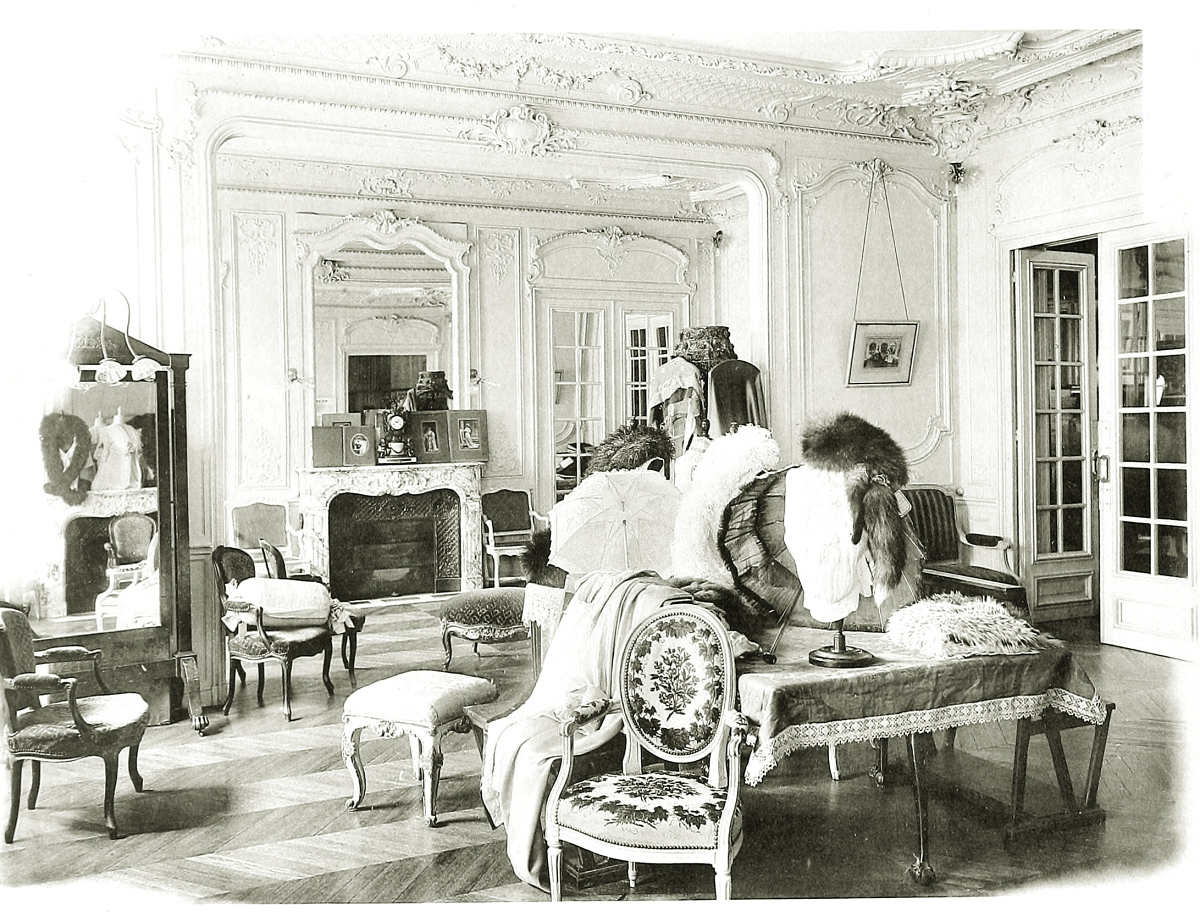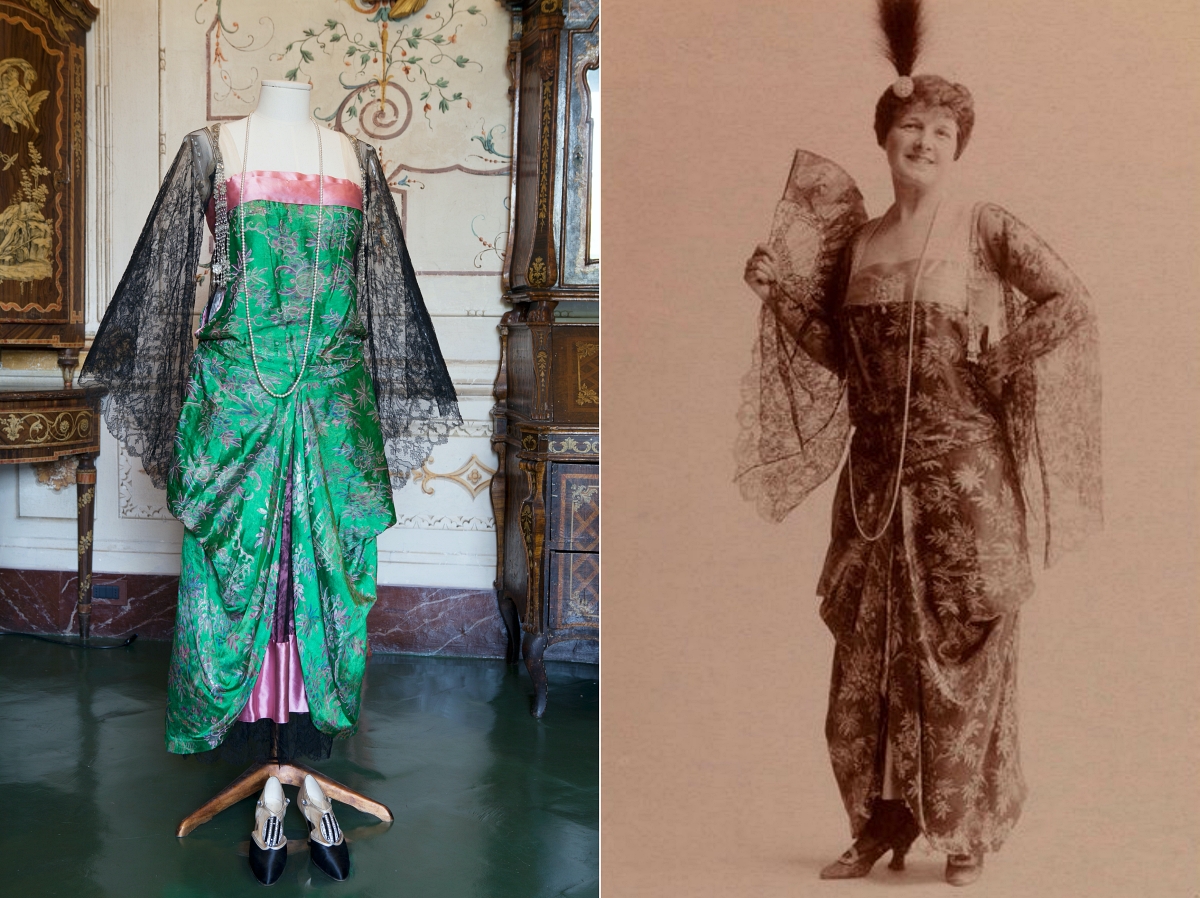Coming across treasures in the attic can be quite an adventure. But, for most of us what we find on this journey is often some old books, mementos, and the occasional heirloom. But, when you have lots of money the finds people discover years later can be quite extraordinary. Enter the case of Hortense Mitchell Acton. This Gilded Age socialite was famed for her beauty in her youth, a point she accentuated with a massive haute couture wardrobe featuring a variety of gowns from the influential, yet largely unknown, Callot Soeurs (the Callot Sisters). Hortense and her husband were forced from their Italian villa in the early 1940s by the Fascists (they later returned). But, many decades later a rare stash of 21 of her fabulous gowns was uncovered in a store room at the villa- a time capsule of fashion.

The collection of 21 gowns was hidden away in a storage room, housed inside 12 Louis Vuitton steamer trunks at the Villa la Pietra near Florence. Hortense was a loyal customer of Callot Soeurs from the turn of the century up until the 1930s. The innovative fashion house oversaw the introduction of many of the era’s hottest trends, such as the handkerchief hem, the use of lace and lamé together, and the new board-straight dress shapes ushered in during the 1920s. The sisters were also known for their collection of vintage and antique textiles from around the world, particularly from Asia, which they incorporated into contemporary clothing.
Today Coco Chanel is remembered for her ability to tap into the current of the times and remain relevant from the 1910s into the present era. But, history is not so kind to those fashion houses that fell by the wayside when newer trends came along.

Chanel had the advantage of being able to reinvent herself after World War II, reissuing her Chanel No 5 perfume at a time when post-war prosperity was high. Then in the 1960s her bouclé suits caught the world’s attention again, becoming favorites with fashion icons like Jackie Kennedy and Anna Wintour.
But, the Callot Sisters have long been forgotten because they sold the operation in 1937 and by 1952 no clothing was made under the Callot name at all. However, in their heyday the 4 Callot sisters (and later 3 after one died under unexplained circumstances) catered to a clientele of wealthy American women who collectively might buy hundreds of pieces each season- each one custom made and beaded and draped by hand. It was one of the ways that rich, American women signaled their status: having the latest designs direct from Paris.

It was an extraordinary luxury, which is why it’s strange that very few of the Callot Soeurs gowns survive today. This made the discovery of the dresses in the 1990s all the more incredible since these dresses had been completely forgotten about for decades.
Since then New York University Florence, which runs the Villa La Pietra site, has been conserving the fragile dresses. The villa was bequeathed to NYU after Hortense’s last child died in the 1990s. The gowns were discovered before the university even had the chance to re-wire the villa and the it was by flashlight that the trunks were unloaded- each one containing a trove of elegant dresses.
As one might expect, the gowns are suffering from a variety of age-related stresses. Discoloration from beading, disintegrating fabric, and permanent creasing from wear are just a few of the problems that these rare and precious items of clothing are facing. As such the items are not normally on display and some of them are only taken out from storage on rare occasions. According to fashion historian and NYU professor, Jessamyn Hatcher, the house may have been looted at some point before the university took possession of it. This means that it is possible that there were once even more Callot Soeurs dresses in the collection before the discovery of the Louis Vuitton trunks.
The Actons lived at the villa through tough times and when Hortense and her husband died her sons lived there. In all the family used the villa as their residence for close 90 years, yet not much is known about Hortense’s life. One thing we can know for certain is that she had an absolutely stunning wardrobe.
SKM: below-content placeholderWhizzco for DOT

